This is the first article of a new project I’m taking on, where I will keep a detailed record of my experiences with a new CCG. I will write short articles about each tournament I enter, along with maintaining a current deck list and a record of how much money I’ve spent in total.
This is my first foray into the Dragon Ball Super CCG.
Tournament: Local shop tournamentDeck: Dark Invasion Starter DeckLeader: Bardock, Unbound By DarknessWin/Loss: 1-2Winnings: 1 packNotable pulls: The Legendary Flute (foil)Money spent to date: $18. Breakdown
I’ve finally found an exciting new arena to test my card game skills in. I’m no stranger to the CCG scene: I grew up playing Yu-Gi-Oh, honed my abilities with Magic: the Gathering in high school and college, and since graduation I’ve been pushing my limits with Android: Netrunner - which is technically an LCG, not a CCG, but close enough. Both Dragon Ball and Netrunner have androids, so it works.
I walked into Dragon’s Den in Poughkeepsie with nothing but a starter deck, a loose understanding of the rules, and that lifetime of CCG experience... and I really wasn’t expecting that last one to make up for the other two. I would give it my all, but I was fully prepared to lose every round. I intended this to be a learning experience, a chance to spar with much better players and learn what was out there. I decided that I would be impressed with myself if I won a single round - which, as it turned out, I did!
The other fighters at the tournament were very welcoming. I asked one if he’d be willing to have a practice match before the tournament, since I had never played before, and he was perfectly happy to. That was my first encounter with Diabolical Duo Androids 17 & 18.
I found that I had a good grasp on the basic rules, if not the finer points. In particular, I had a bad habit of trying to attack cards that were in active mode (untapped), which is illegal. Beyond just correcting my mistakes, my opponent pointed out a couple of possible combos and synergies in my deck that I hadn’t recognized. He beat me pretty handily, but I finally felt that I was ready for a real match. Which was good, because the tournament started almost immediately after we finished.
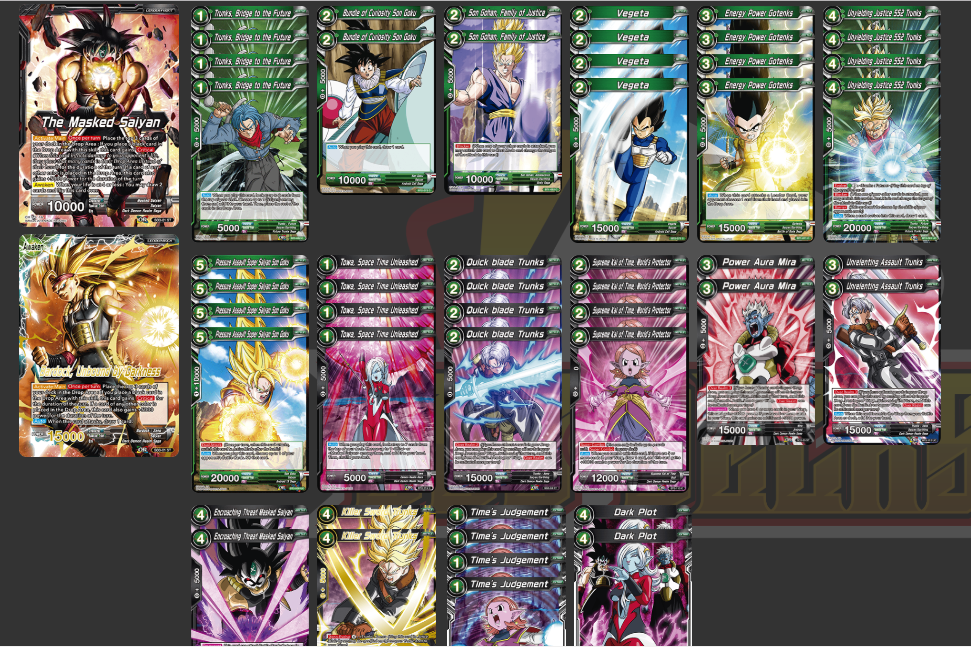
The Basics
Note: This is a quick overview of how the game is played so that the rest of the article makes sense. If you already know how to play the DBS CCG, skip ahead to Round One.
The Dragon Ball Super CCG is a fast-paced, aggressive battle between two players. Each player has a leader card, which is always in play. You attack the leader to deal damage, which is how you win the game. Each leader also has an Awaken ability, which can be activated when they reach a certain life point total. Most leaders, but not all, Awaken at four life (you start with eight). Awakened leaders generally have increased attack power and an extra ability, such as drawing a card when they attack. It's a fun way to make sure a losing side has a chance to come back, while also being really thematic with the show.
The leader is supported by battle cards, which are other characters who can attack, defend (if they have the Blocker ability), and have various other effects. You can destroy battle cards by attacking them, but you won’t take away your opponent’s life by doing so. There are also cards called extra cards, which don’t just have an effect and are then discarded. One of the most common types of extra card negates one of your opponent’s attacks - there are a variety of extra cards that all have that ability, along with other effects like drawing an extra card or preventing other attacks from battle cards.
You play your cards by using energy, which works a lot like mana does in Magic: the Gathering. You can add up to one card per turn to your energy, then spend them to play cards from your hand. All of your energy refreshes at the start of your turn, so you can keep building it up for bigger and stronger cards as the game goes on. What’s quite different from Magic is that there aren’t specific energy cards; you can put any card except your leader into your energy. I enjoy this because it means there’s no chance of getting a hand flooded with lands; or, on the flip side of the coin, struggling to play cards because you haven’t drawn the mana for them.
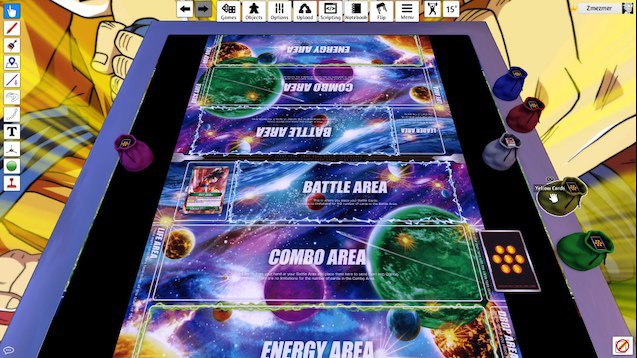
A view of the battlefield from Tabletop Simulator.
Battle is resolved in four steps. The turn player attacks, then the other player has the chance to play a negation. If the attack goes through, the attacker can then combo cards from the hand or the field on top of the attacker to increase its attack power. The defender then gets the chance to do the same. If the attacker’s power matches or exceeds the defender’s, the defending card is destroyed (or takes a damage, if it’s the leader). Any cards used for combos are discarded.
Finally, life is tracked by taking eight cards from the top of your deck and the start of the game and laying them out. Each card represents a life point, and each damage you take adds one of those cards to your hand (unless the attacker has Critical, which makes you discard it instead). Most cards deal a single damage though some have abilities to deal more damage per attack such as double strike, triple strike, and even quad strike. When a player’s life hits zero, that player loses and the game ends.
Okay, that should do it for the basic rules. On to the battles!
My first match was against a deck called Goku’s Lineage. That’s a group that includes Goku and pretty much his entire family, including several other Gokus... which looked a little silly. Then again, I had five different versions of Trunks, so who am I to talk? I guess you just can’t think too hard about these things while you’re fighting.
I’ll give them this, though: Their teamwork was remarkable. They kept swapping places with one another in the middle of the fight, making it so they could attack much more often. Even with that, I might have been able to win just through superior strength; dark power burns away my own deck, but lets me cheaply and easily summon strong fighters and increase my own attack. There were a lot of Goku’s Lineage fighters all working together, but most of them were fairly weak and they were having a hard time hurting me.
However, it didn’t matter how much power I was packing, because I couldn’t land a hit to save my life. A seemingly endless collection of Flying Nimbuses and Instant Transmissions kept Goku out of reach while he dug through his deck to find the lynchpin of his strategy, Height of Mastery Son Goku.
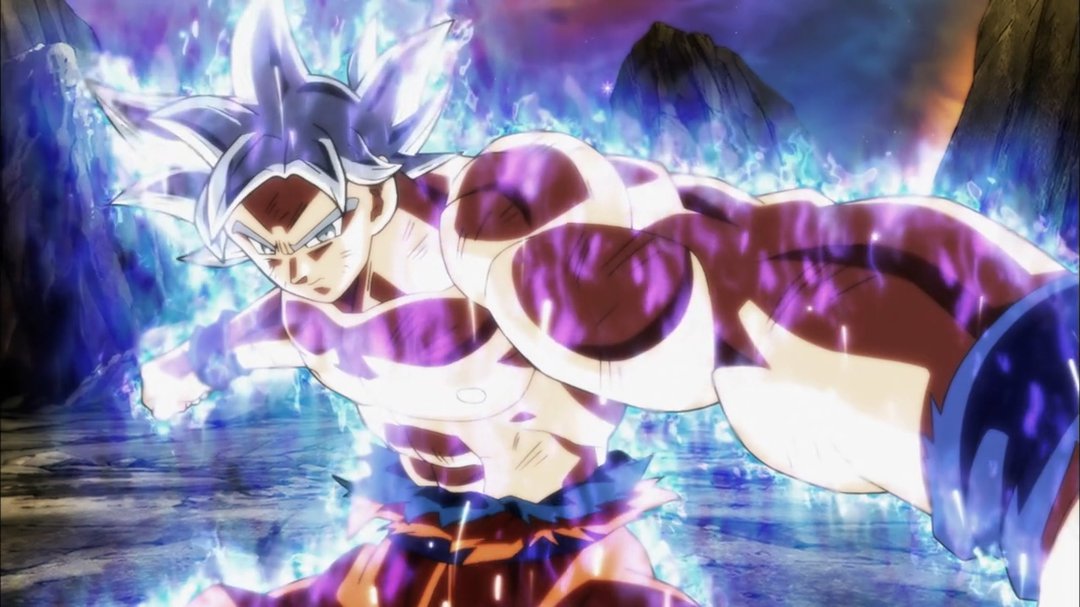
Don't you talk to your father like that, Goku!
With one of the other versions of Goku able to swap himself out for Height of Mastery for only five energy instead of the eight he normally costs, it wasn’t too hard for him to hold me off long enough to power up. I lost both rounds of this first match to that overwhelming attack.
My second match was against Universe 6’s God of Destruction and his entourage. This was a fight that I could really sink my teeth into. Both of us thrive on high attack powers and aggressive play, and it led to a thrilling slugfest.
Champa took control of the fight early on. His ability to draw extra cards every turn and Red’s penchant for double strike meant that he had me beat on the damage race. We kept trading blows, but I had to take a step back and keep my guard up to survive the onslaught. A couple of blockers and a well-placed attack negation kept me in the fight.
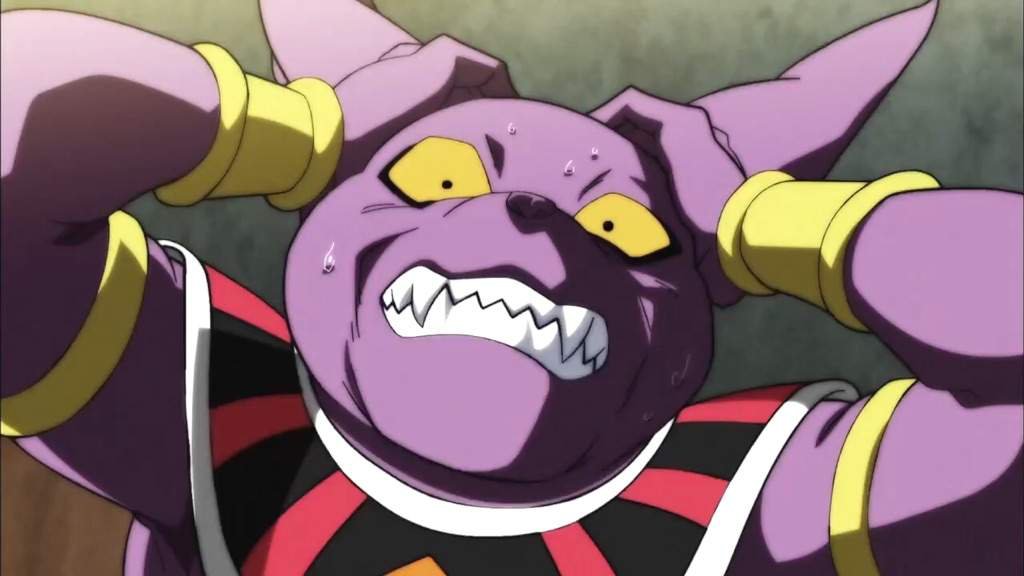
Champa's low endurance cost him the match.
Rather than trying to beat Champa directly, I focused on maintaining control of the field. I knocked out several of his fighters and forced him to spend a fair amount of his hand to fend me off. Even with his extra card draw, Champa was running out of steam while I was just getting started, and around the fourth turn I took the momentum. It was just a matter of time before he ran out of options, and then I swarmed him for the win. The second round played out much the same way, giving me my one win for the day.
This would be my second time facing these mechanical monsters today, and it felt like an appropriate end to my first tournament. I looked forward to showing them what I had learned since our practice match.
Not enough, as it turned out. As I had realized from my first time facing them, they’ve got a fairly weak start but become far more powerful as they take damage. However, knowing that doesn’t do a whole lot of good, given that I have to do damage in order to win.
The real danger comes from their teamwork. Android 17 can summon Android 18, who can destroy my cards, and all the while their leader makes them both stronger and cheaper to play. I tried to use a similar strategy as I had against Champa, knocking out the fighters rather than going directly for the leader, but it wasn’t enough. There were too many, and they were too strong for me to keep up with. The Androids won both rounds. At least I didn’t try to attack any fighters while they were in active mode this time.
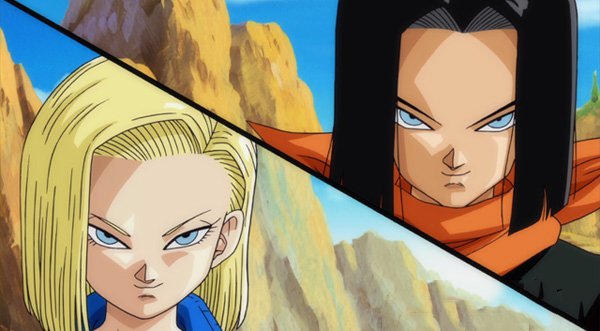
Those smug smirks were the last thing I saw that day.
Plans For Next Time
Even though I only won one match, I had a great time at the tournament - and, in fact, did better than I expected to. The other players were all very nice, and a couple of them even gifted me some of their spare cards before I left. I definitely plan to keep getting stronger and come back to try again.
The main piece of advice I got, from several people, was to swap out the Green cards from the starter deck and replace them with Red. The deck as it comes in the box is surprisingly good, but the Green cards are a bit too slow and bring the whole deck down into a sort of muddled aggro/midrange zone. With the right red cards, so I’m told, it turns into a brutally effective beatdown.
I only won one pack, but one of the cards I pulled is pretty valuable (not the rare, funnily enough). The Legendary Flute is so good, in fact, that Bandai just handed down their first ever Yu-Gi-Oh style restriction, limiting it to one per deck. However, the Flute relies on having a Blue leader, which I have no intention of playing - especially now that I can’t run four Flutes. My plan, therefore, is to take it to a local free play event and try to trade it for the Red cards I need. I’ll then have to buy whatever I can’t pick up there.
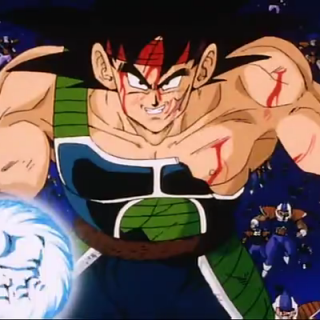
You can beat me down, but I'm just getting started!
If all goes well, then by my next tournament I’ll be much stronger.